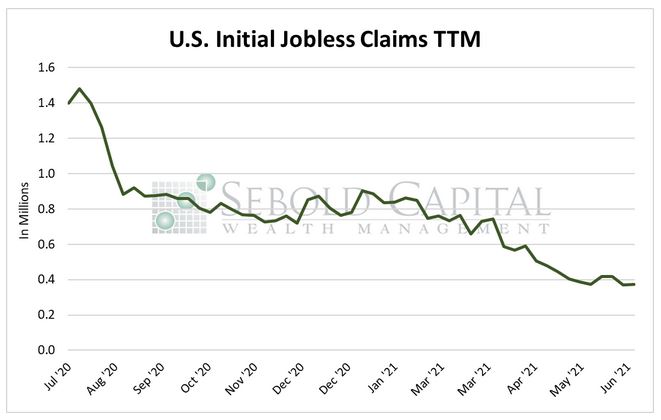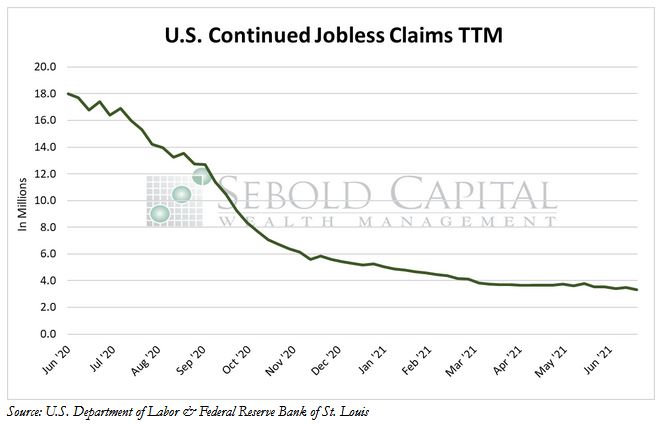 US Initial Jobless Claims, provided by the US Department of Labor, provides underlying data on how many new people have filed for unemployment benefits in the previous week. One can gauge market conditions in the US economy around employment; as more new individuals file for unemployment benefits, fewer individuals in the economy have jobs. In normal times, this means people have less money to spend. Historically, initial jobless claims tended to reach peaks towards the end of recessionary periods, such as on March 21, 2009, when 661,000 new filings were reported.
US Initial Jobless Claims, provided by the US Department of Labor, provides underlying data on how many new people have filed for unemployment benefits in the previous week. One can gauge market conditions in the US economy around employment; as more new individuals file for unemployment benefits, fewer individuals in the economy have jobs. In normal times, this means people have less money to spend. Historically, initial jobless claims tended to reach peaks towards the end of recessionary periods, such as on March 21, 2009, when 661,000 new filings were reported.
Last week, initial claims rose by 0.54% to 373,000 from an upwardly revised pandemic-low of 371,000. However, continued claims declined by 4.16% to 3.34 million. The number of initial claims rose slightly above its long-term average of 372,000, and the number of continued claims remains above its average of 2.81 million.
Despite the slight uptick, initial jobless claims have declined by 52.2% year-to-date as restrictions placed on businesses have gradually been lifted. The figure is known for being rather volatile, so there is a possibility of the number being revised in either direction. Continued claims declined to a new pandemic low, which could reflect more individuals going back to work and falling off the benefits rolls now that several states have chosen to end the enhanced unemployment benefits. Continued claims should continue to edge down as more states opt out of the program and as it expires at a nationwide level in September.

July 8, 2021
